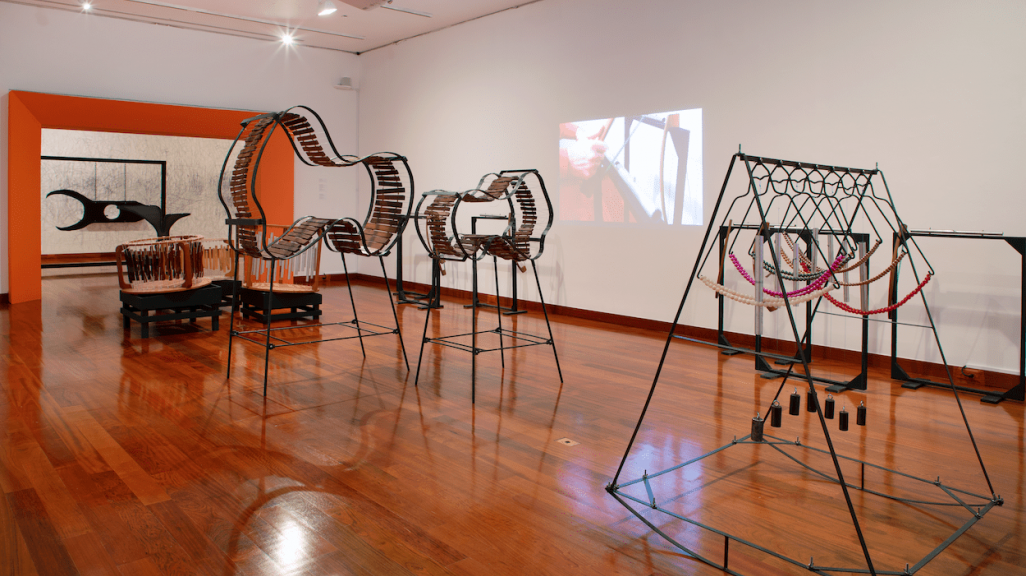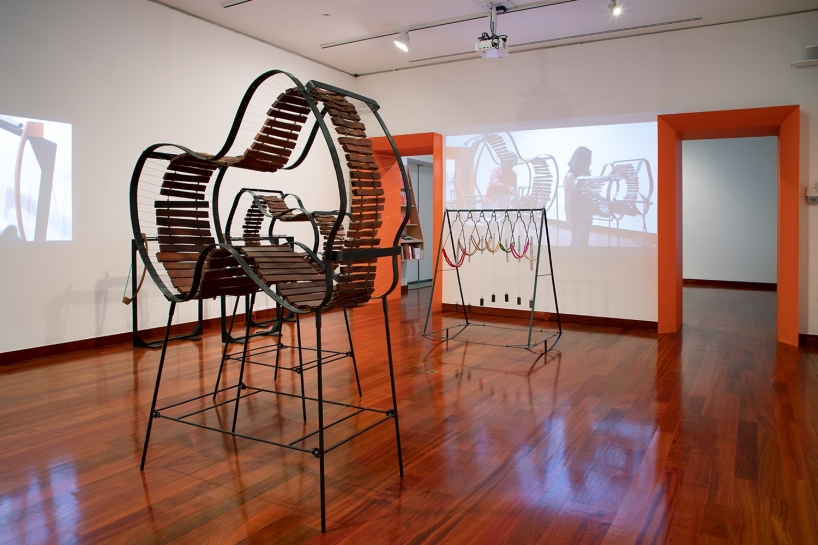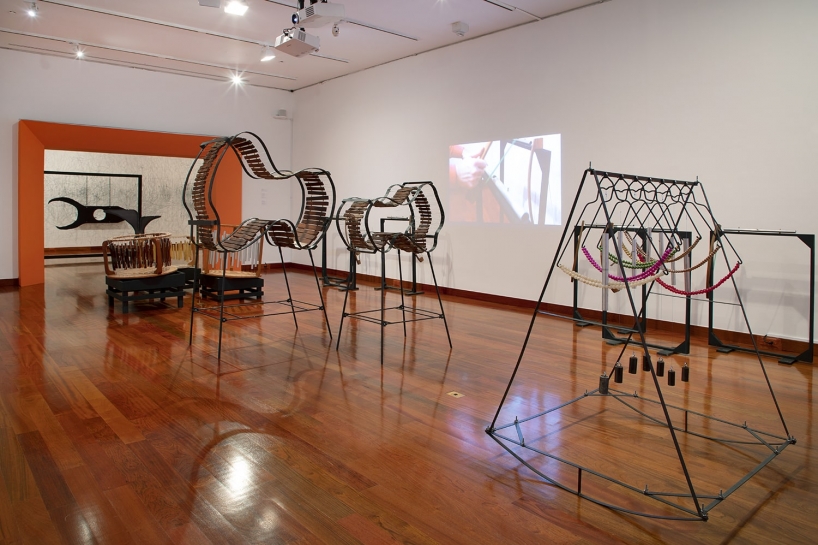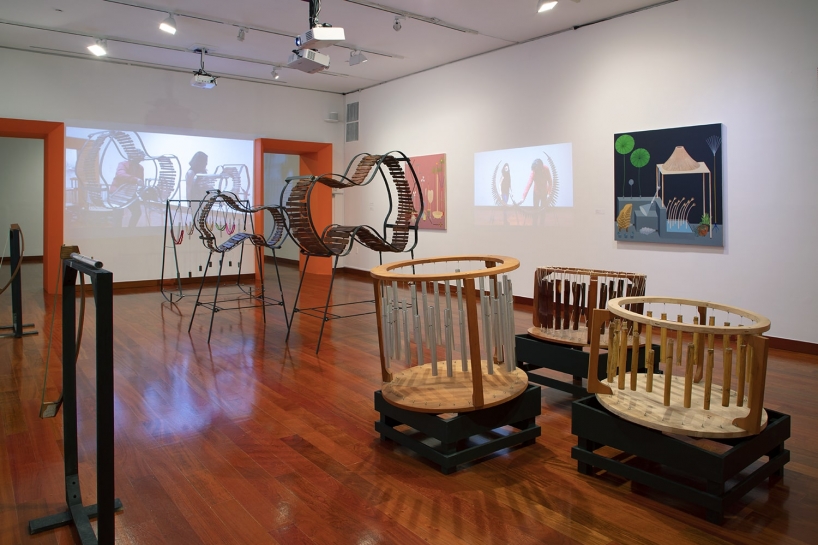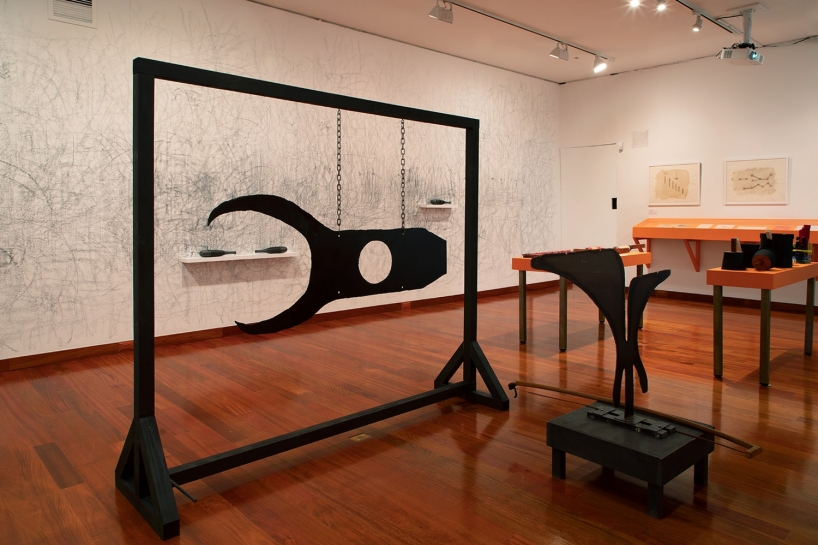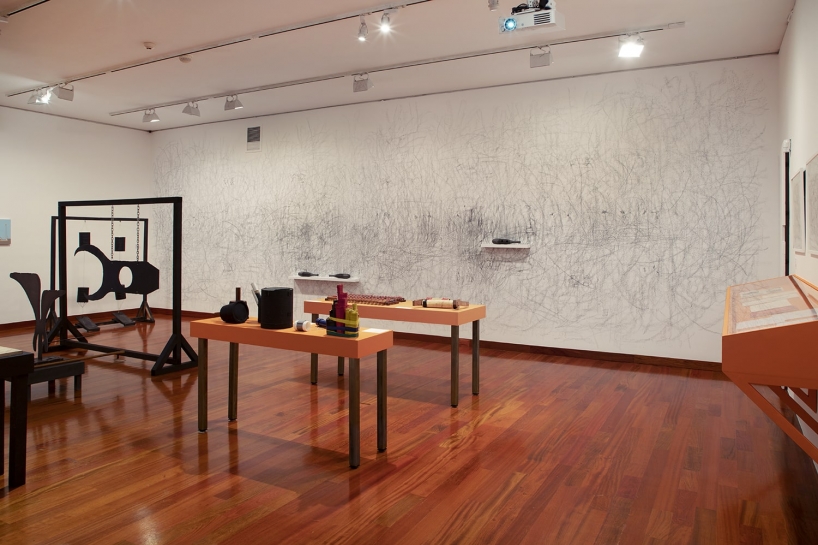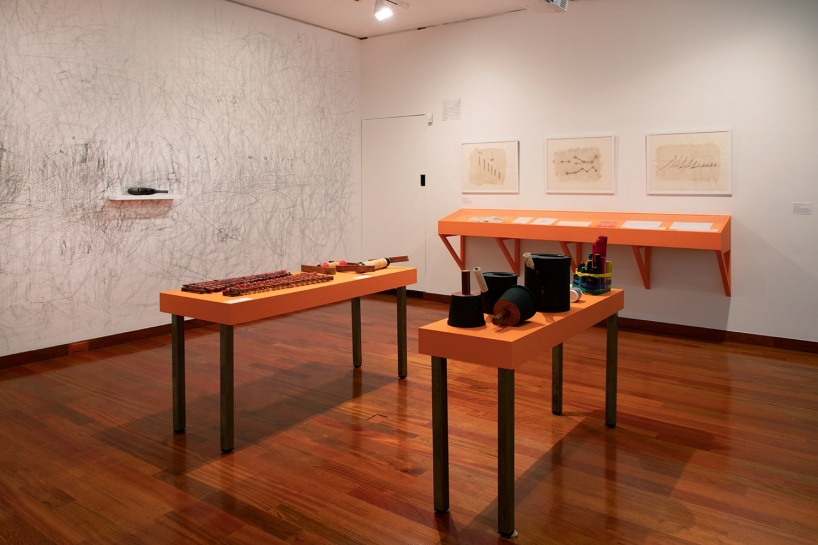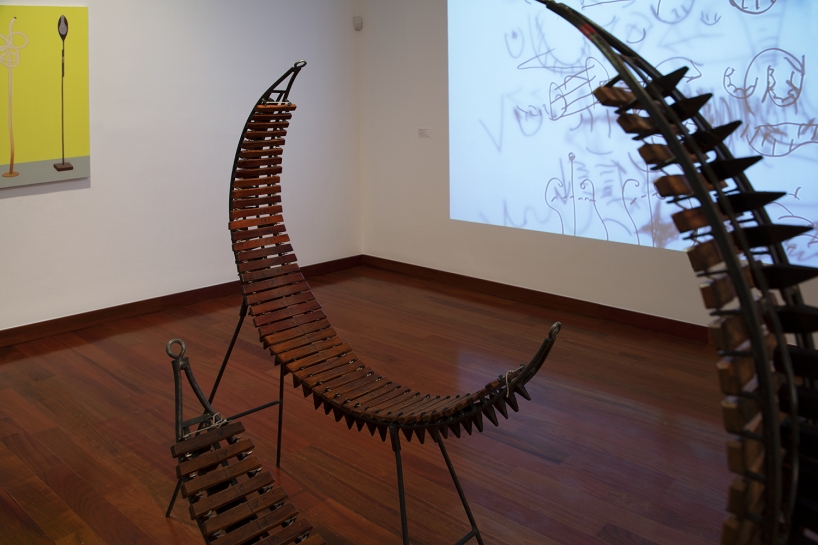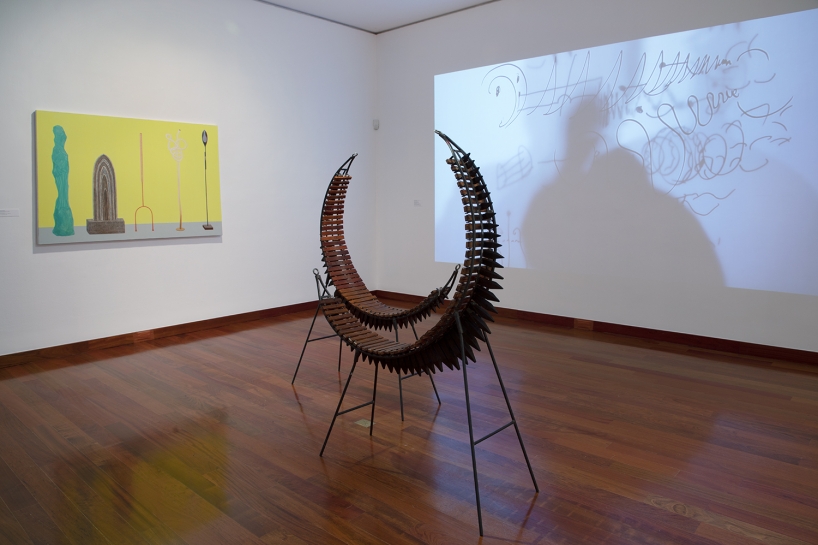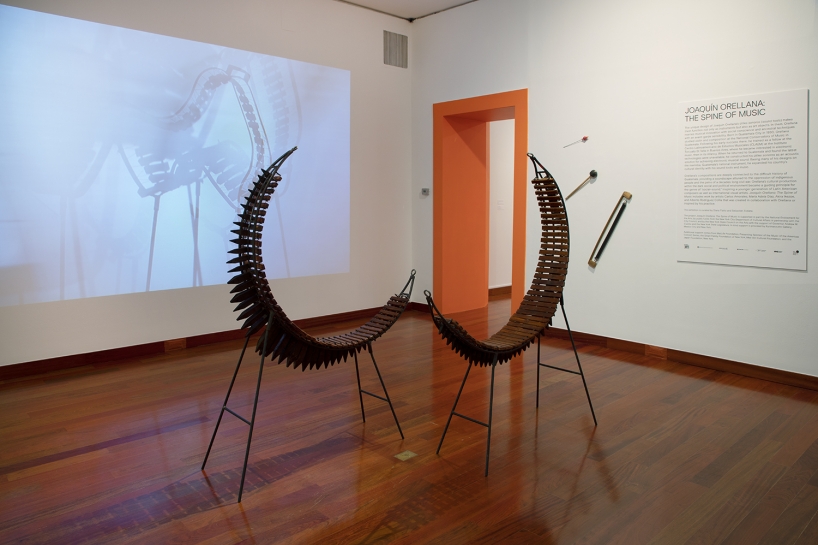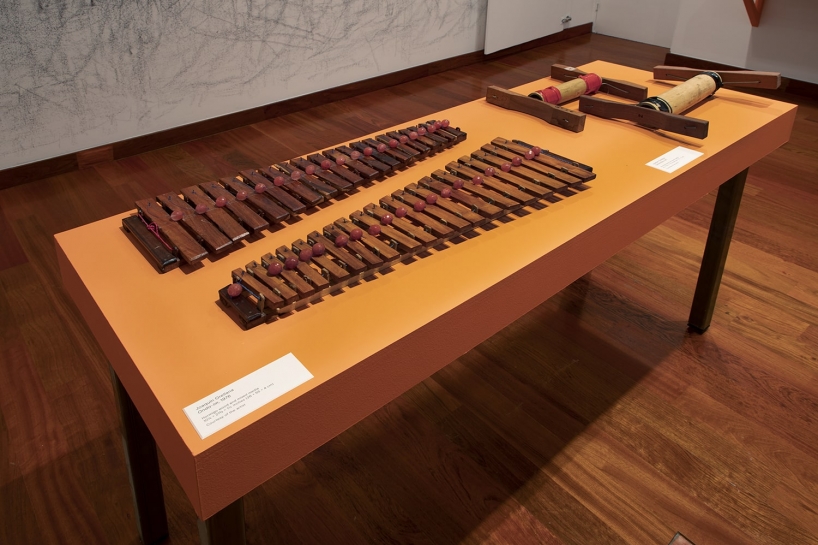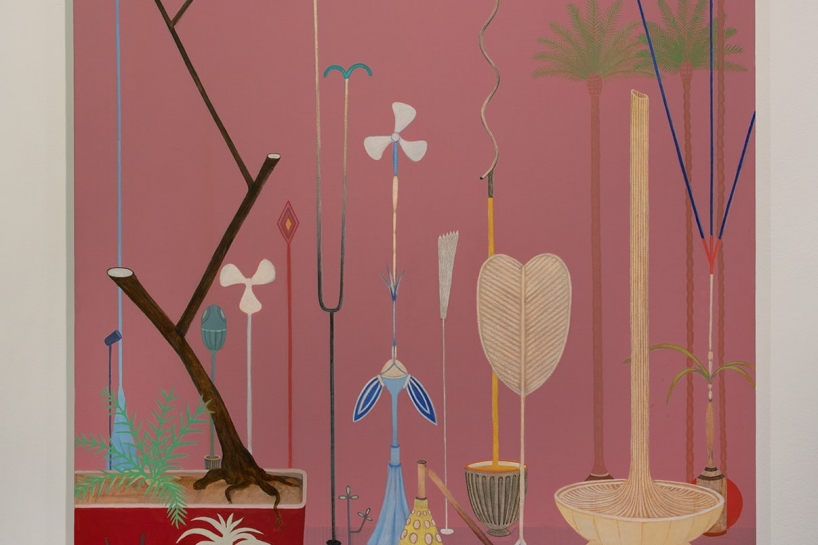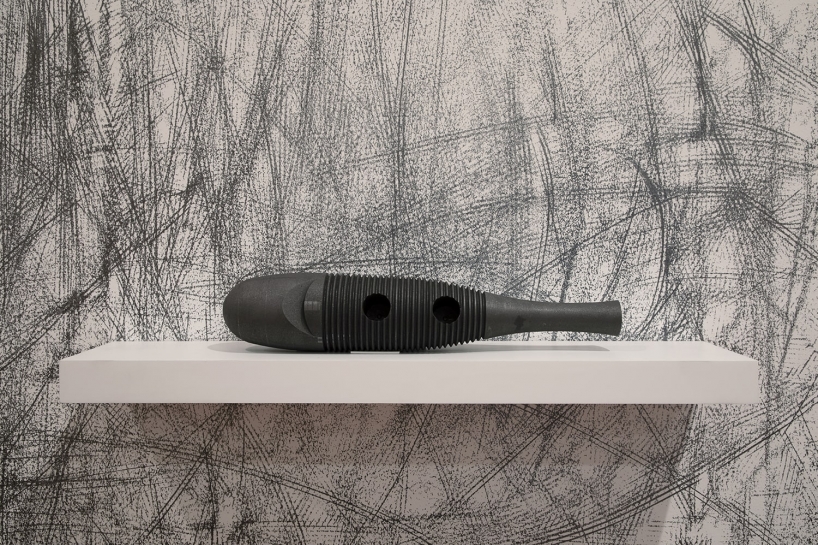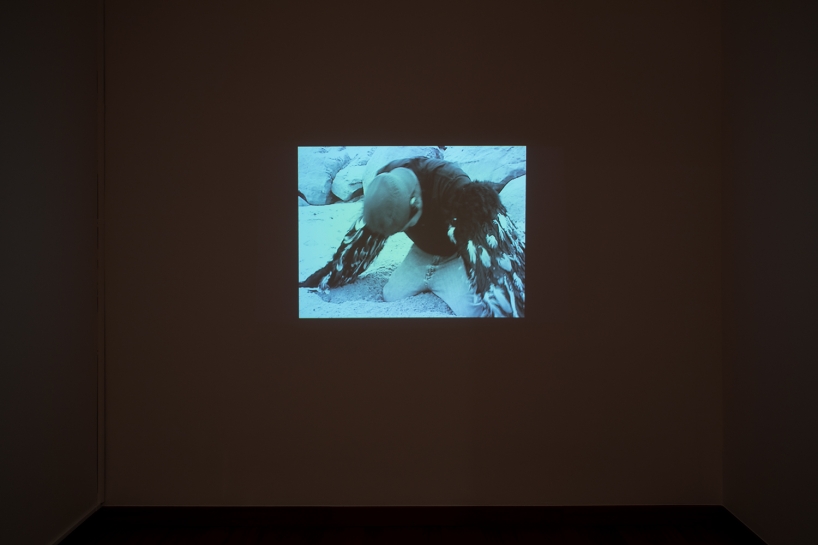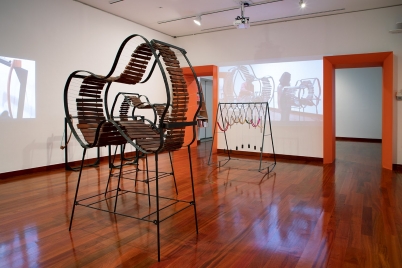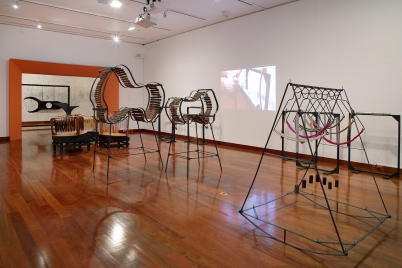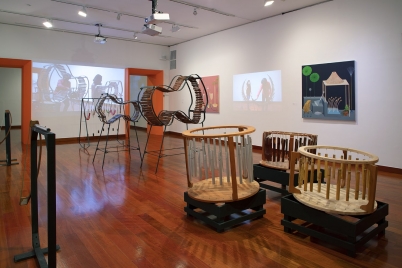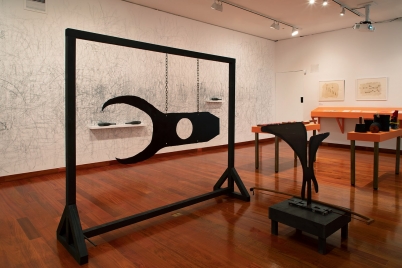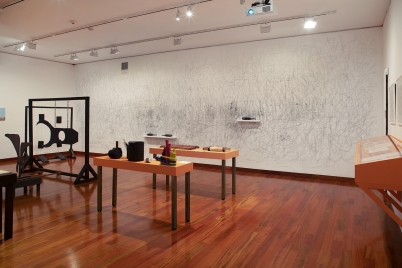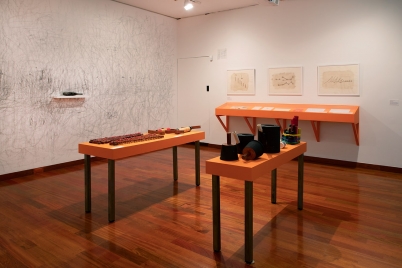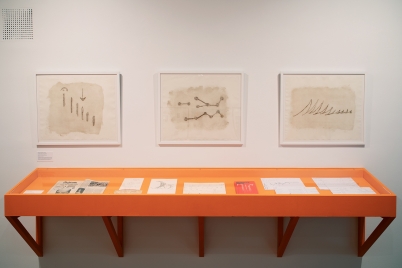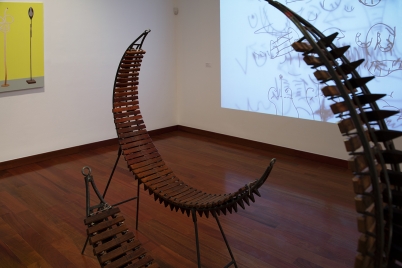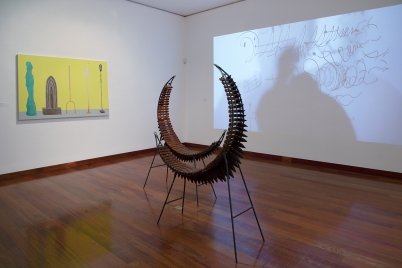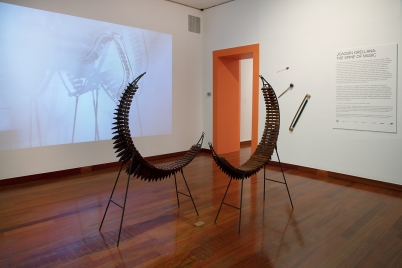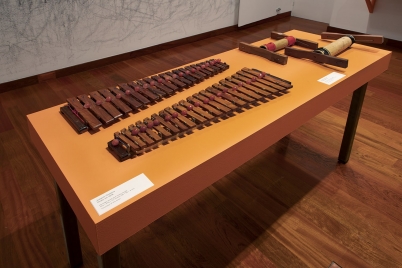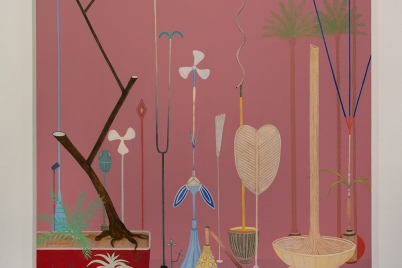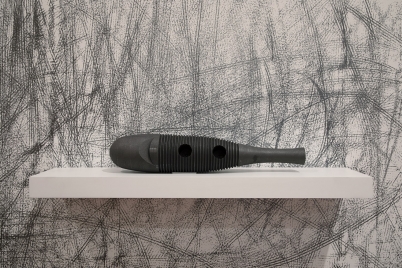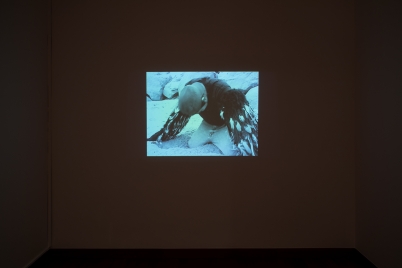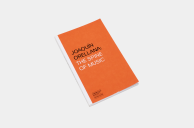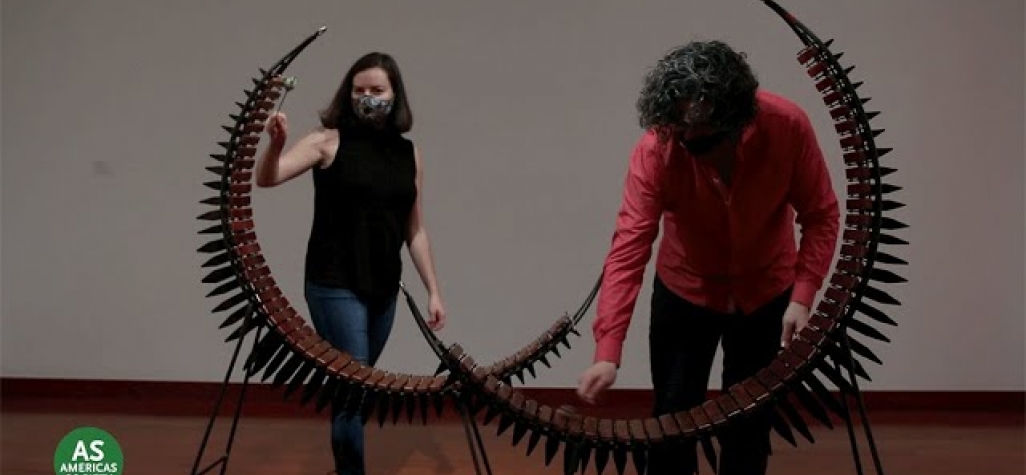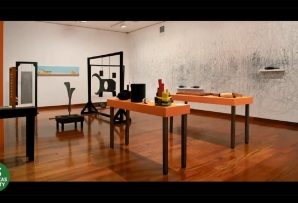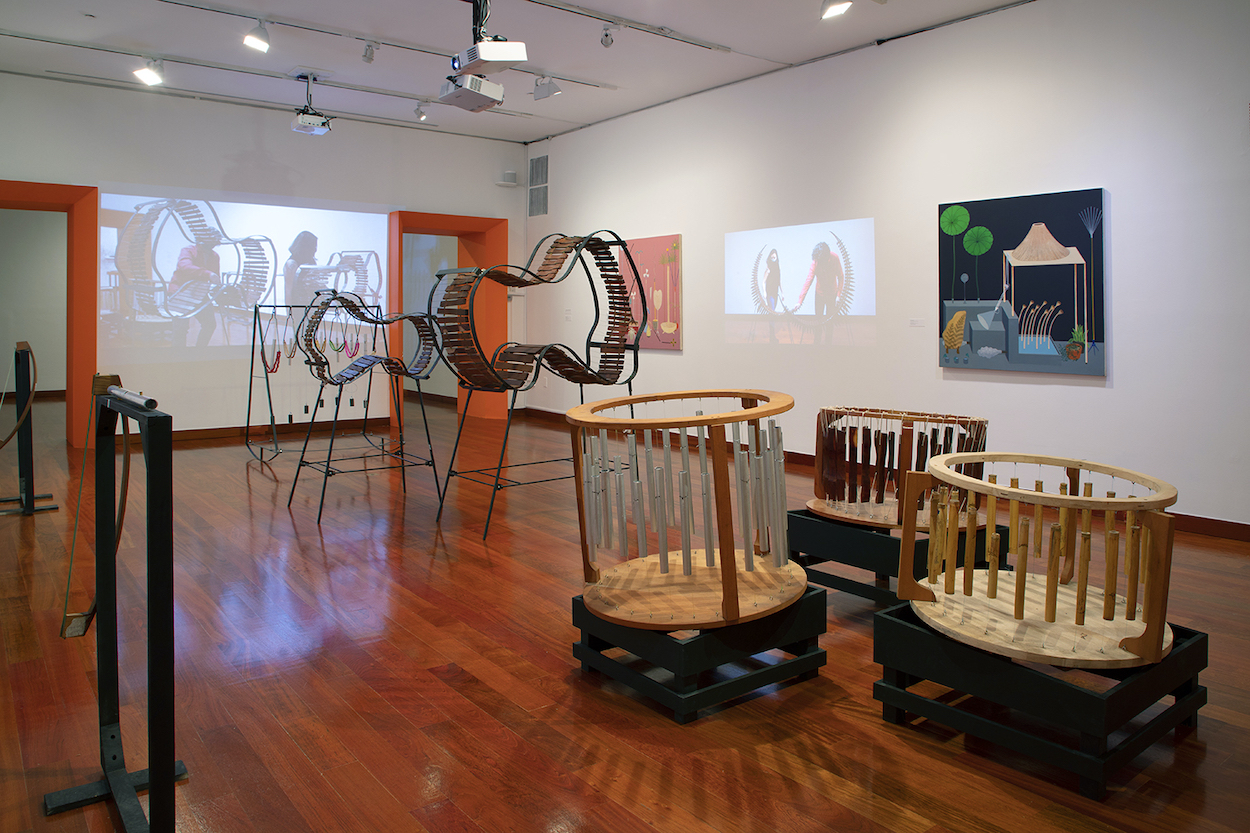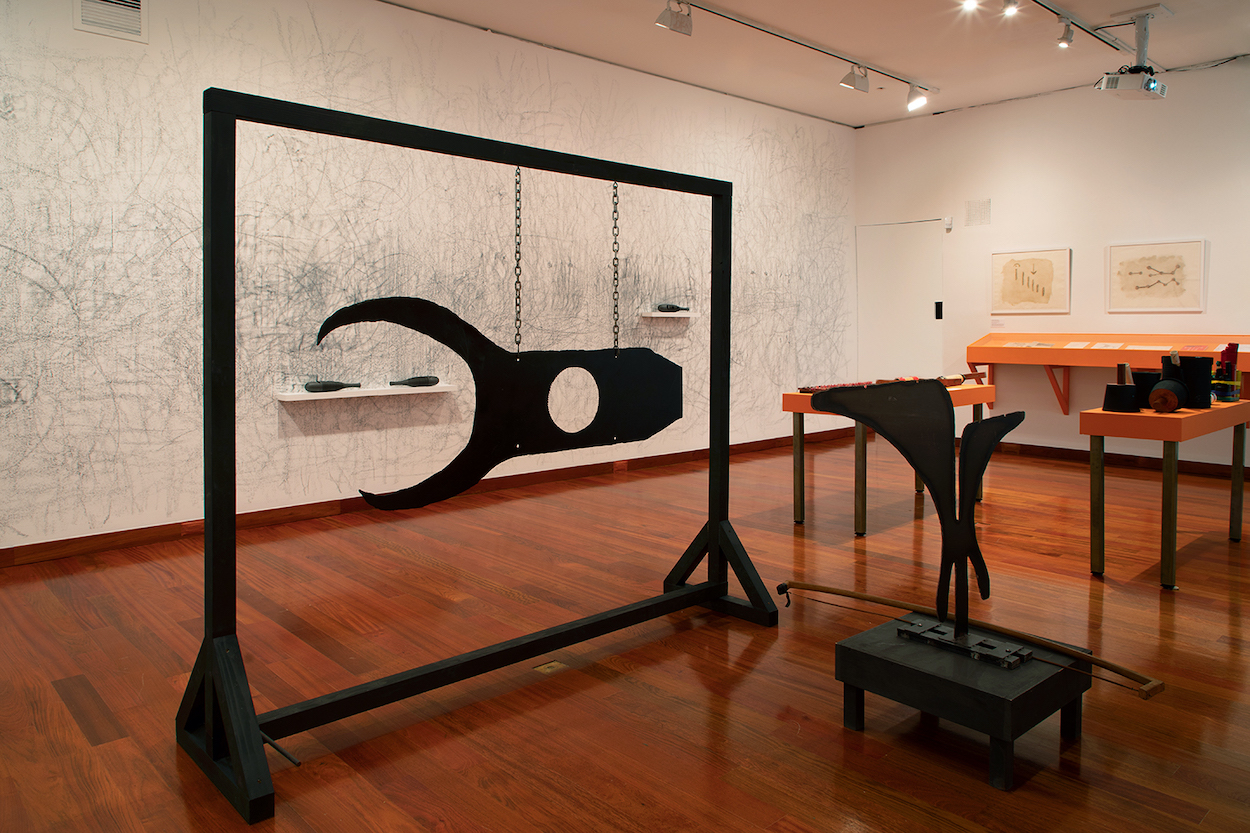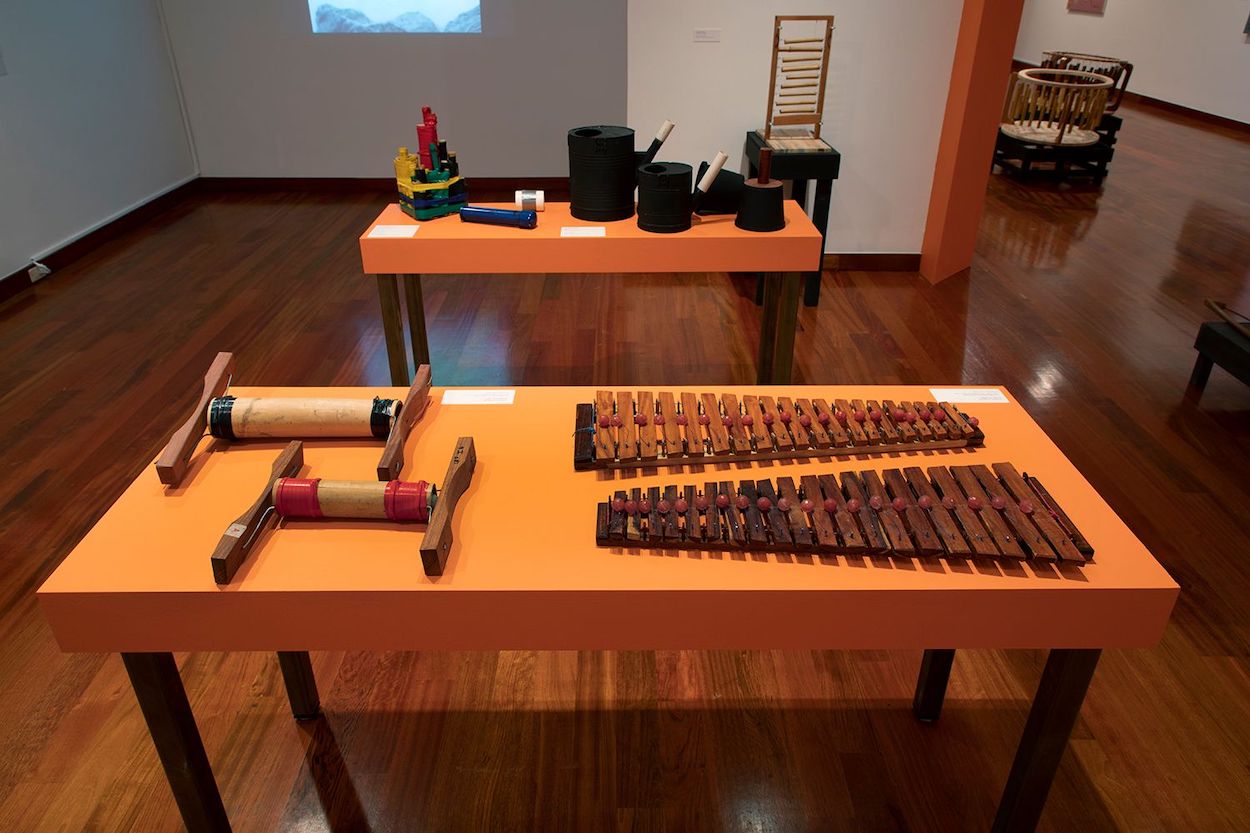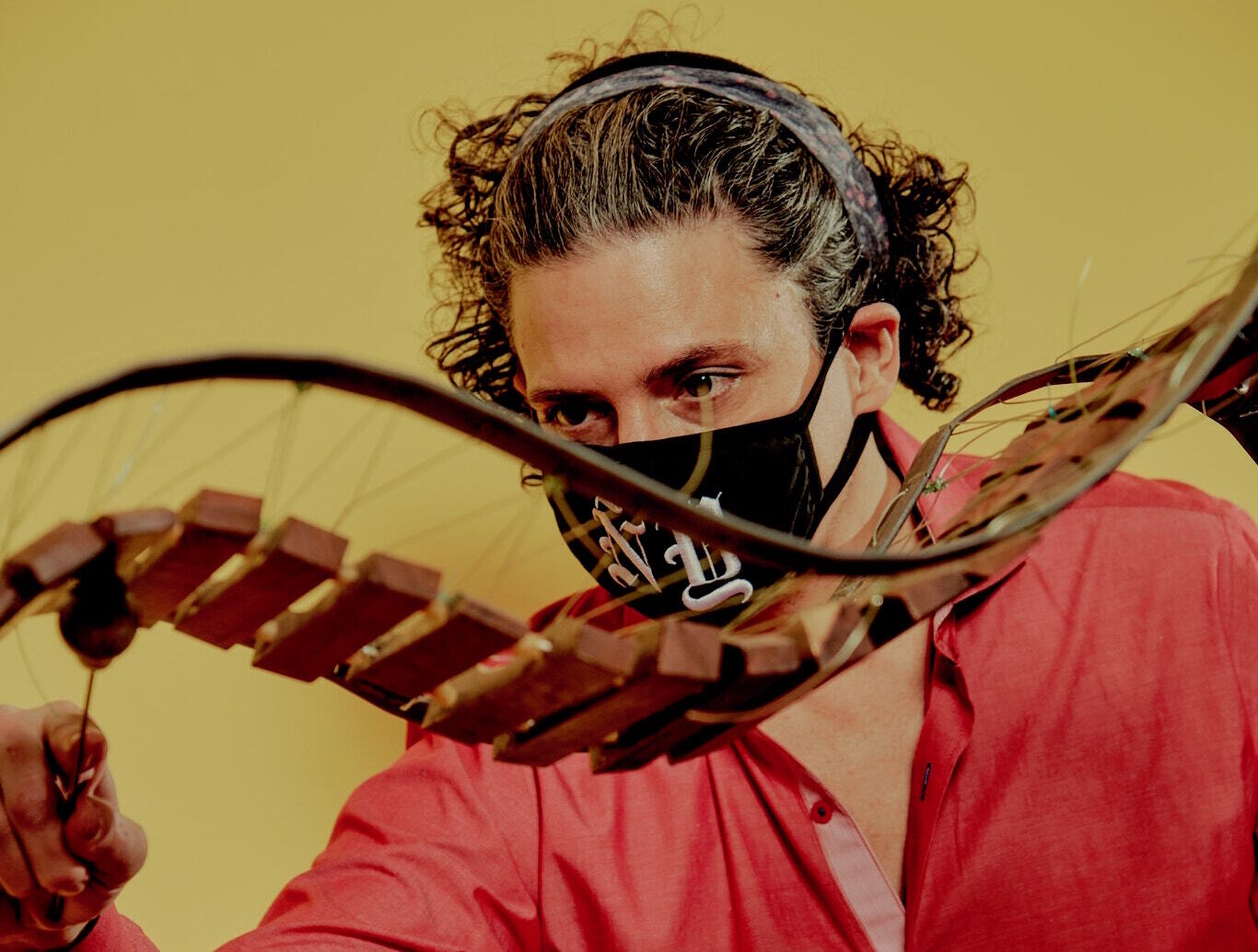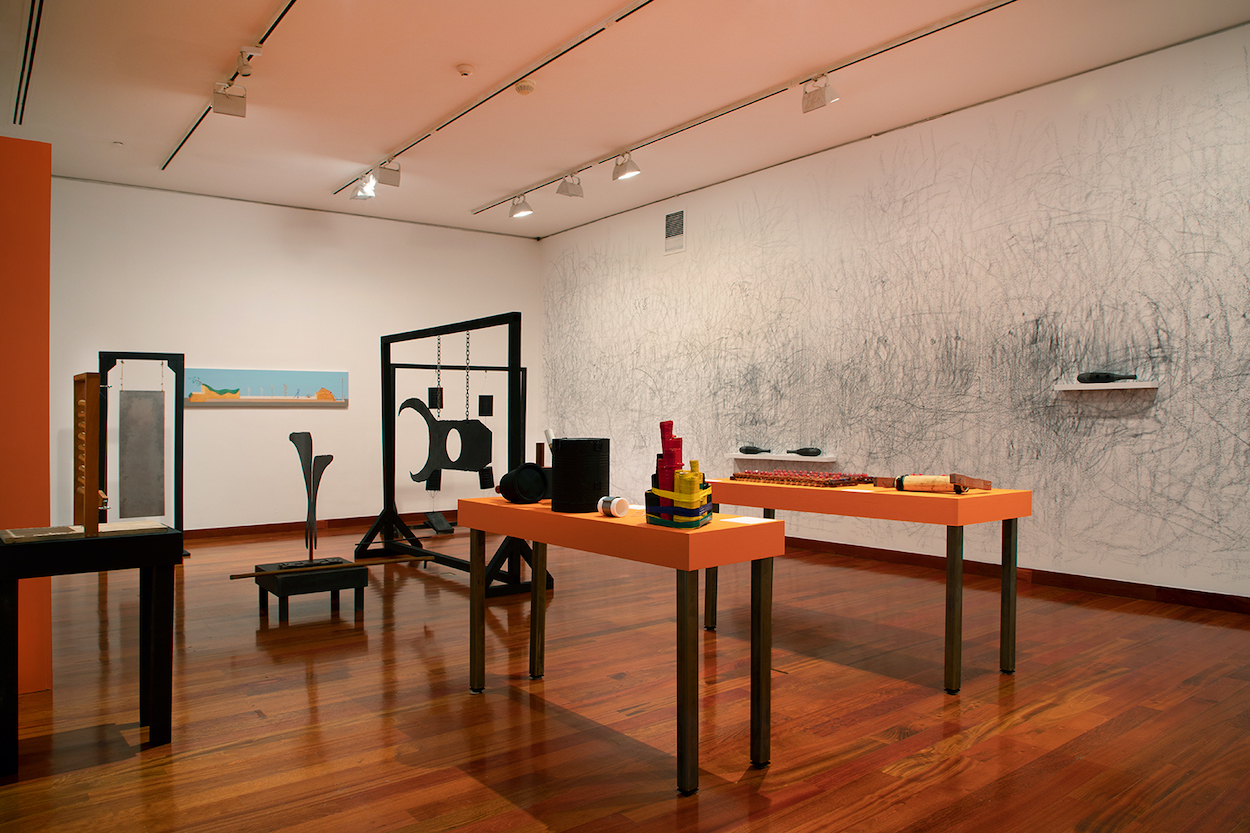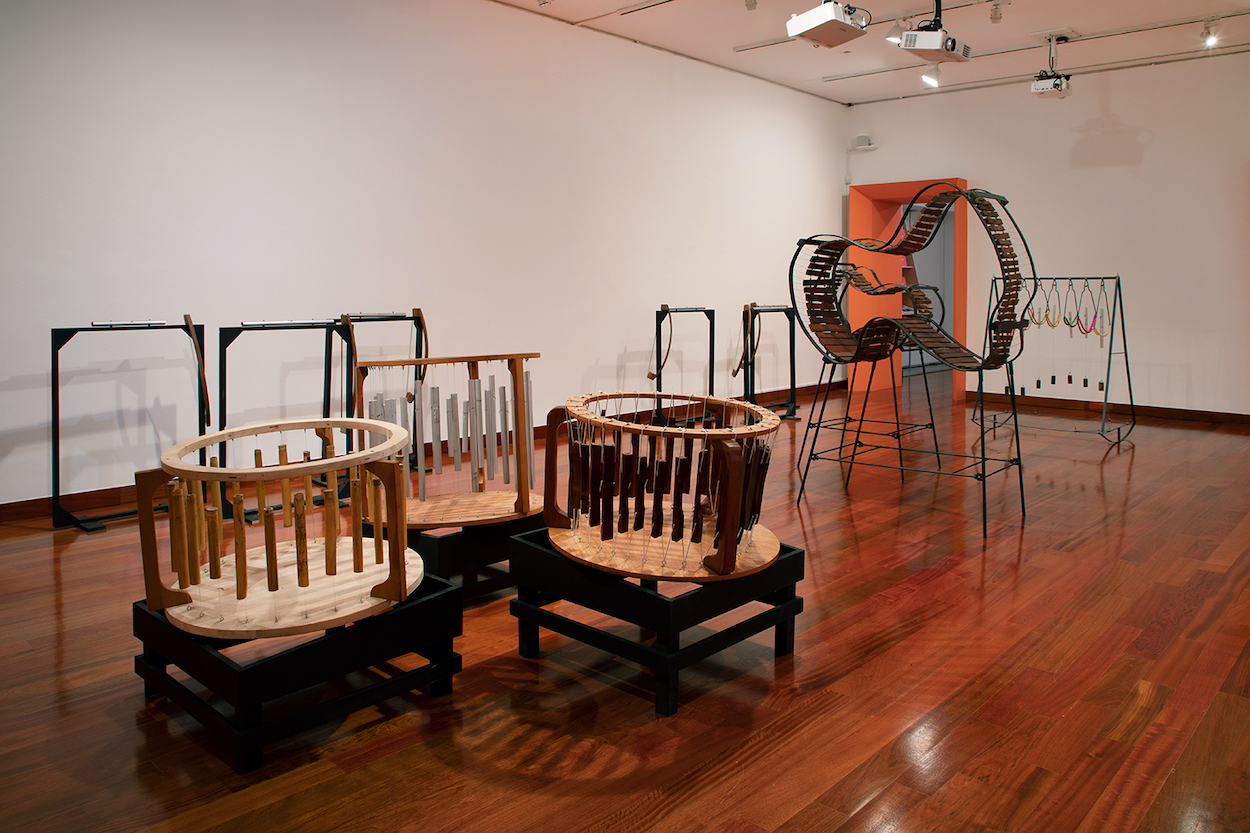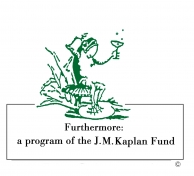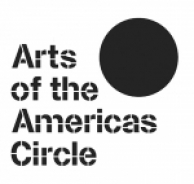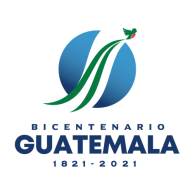Joaquín Orellana: The Spine of Music
On view:
through
Joaquín Orellana: The Spine of Music
Book your visit here.
A maximum capacity of six people are accepted in the galleries at all times, following health safety guidelines.
The first exhibition of the Guatemalan composer’s útiles sonoros (sound tools) in the United States, Joaquín Orellana: The Spine of Music presents these innovative instruments alongside the work of contemporary artists. This exhibition connects the musician’s avant-garde sensibility with that of artists including Carlos Amorales, María Adela Díaz, Akira Ikezoe, and Alberto Rodríguez Collía, each of whom has spent time with the composer and created work related to his practice. Watch conversations in a limited In the Studio series dedicated to the exhibit.
As a part of this project, Americas Society has commissioned a new score by Orellana, Efluvios y puntos, which will premiere at Americas Society. The instruments will continue to be activated in the gallery over the course of the exhibition.
This exhibition was curated by Diana Flatto and Sebastián Zubieta.
Check out conversations with artists whose works are on view at the exhibit.
About the artist:
Joaquín Orellana is among the most influential living members of Latin America’s musical avant-garde. Born in Guatemala City in 1930, he studied violin and composition at the National Conservatory of Music in Guatemala and was a fellow at the preeminent Centro Latinoamericano de Estudios Musicales (CLAEM) at the Instituto Torcuato Di Tella in Buenos Aires. During his time at the CLAEM lab, Orellana encountered contemporary avant-garde innovations and became particularly interested in electronic music, then in its infancy. When he returned to Guatemala in 1968 and found the latest technologies were unavailable, he decided to invent alternatives in order to recreate the sound-world he imagined after his experiences in Argentina. The series of instruments he created became an analogue solution for achieving an electronic musical sound and at the same time, established a cultural identity for Guatemala within Latin America. In 1972 he designed and built the Sonarimba, the first of his útiles sonoros (sound tools) and like many of his instruments that followed, the Sonarimba is based on the marimba, Guatemala’s national instrument. The unique design of Orellana’s instruments makes them function not only as innovative musical instruments but also as sculptural objects.
Orellana’s compositions are deeply connected to the difficult history of Guatemala, providing a soundscape attuned to the oppression of indigenous people and the pains of a decades-long civil war. Influenced by Orellana, the dark social and political environment became a guiding principle for a younger generation of Latin American composers. A new genre of "social-sound" emerged, where composers looked to society and a people’s history for musical inspiration. Orellana’s radical practice combines innovation with a powerful social conscience, and ancestral techniques with avant-garde sensibility.
Co-curators Sebastian Zubieta and Diana Flatto share sounds from The Spine of Music.
"Orellana’s works are wonderfully inventive and, just as important, equally enjoyable as musical instruments and as visual objects," writes Jonathan Goodman.
Using instruments made from the materials indigenous to Guatemala, Joaquín Orellana "articulates a radically expansive and humane approach to avant-garde composition," writes Johanna Fateman.
The Spine of Music showcases Joaquín Orellana's “sculptural, Surrealist, and darkly sensuous” instruments, per a New York Times review.
"'The Spine of Music' offers a different, vaguely utopian model of peaceful no-rules anarchy, participation and silence," writes Martha Schwendener in The New York Times.
Los instrumentos musicales de Joaquín Orellana parecen de otro planeta, pero salieron de la extraordinaria imaginación del artista guatemalteco, escribe Helen Cook en EFE.
The presentation of Joaquín Orellana: The Spine of Music is supported in part by the National Endowment for the Arts and by public funds from the New York City Department of Cultural Affairs, in partnership with the City Council. It is also made possible, in part, by the New York State Council on the Arts with the support of Governor Andrew M. Cuomo and the New York State Legislature.
Americas Society thanks the Ministry of Culture and Sports of Guatemala for its support on this project.
Additional support is provided by MetLife Foundation, Presenting Sponsor of the MetLife Foundation Music of the Americas Concert Series; the Smart Family Foundation of New York; Mex-Am Cultural Foundation; and the Japan Foundation, New York. In-kind support is provided by Kurimanzutto Gallery Mexico City and New York. The accompanying publication is made possible, in part, by a grant from Furthermore: a program of the J.M. Kaplan Fund.
Americas Society acknowledges the generous support from the Arts of the Americas Circle members: Estrellita B. Brodsky; Virginia Cowles Schroth; Diana Fane; Galería Almeida e Dale; Isabella Hutchinson; Carolina Jannicelli; Vivian Pfeiffer and Jeanette van Campenhout, Phillips; Gabriela Pérez Rocchietti; Erica Roberts; Sharon Schultz; Diana López and Herman Sifontes; and Edward J. Sullivan.








